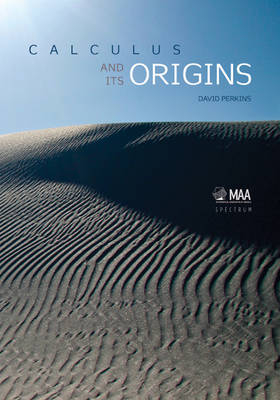
Calculus and Its Origins
Seiten
2012
Mathematical Association of America (Verlag)
978-0-88385-575-1 (ISBN)
Mathematical Association of America (Verlag)
978-0-88385-575-1 (ISBN)
- Keine Verlagsinformationen verfügbar
- Artikel merken
This book tells the story of how calculus came to be. It is accessible to anyone with a basic knowledge of geometry and algebra: pre-existing knowledge of calculus is not required. Exercises are included, which makes it ideal for use in the classroom.
Calculus answers questions that had been explored for centuries before calculus was born. Calculus and Its Origins begins with these ancient questions and details the remarkable story of how subsequent scholars wove these inquiries into a unified theory. This book does not presuppose knowledge of calculus, it requires only a basic knowledge of geometry and algebra (similar triangles, polynomials, factoring). Inside you will find the accounts of how Archimedes discovered the area of a parabolic segment, ibn Al-Haytham calculated the volume of a revolved area, Jyesthadeva explained the infinite series for sine and cosine, Wallis deduced the link between hyperbolas and logarithms, Newton generalized the binomial theorem, Leibniz discovered integration by parts, and much more. Each chapter ends with further results, in the form of exercises, by such luminaries as Pascal, Maclaurin, Barrow, Cauchy and Euler.
Calculus answers questions that had been explored for centuries before calculus was born. Calculus and Its Origins begins with these ancient questions and details the remarkable story of how subsequent scholars wove these inquiries into a unified theory. This book does not presuppose knowledge of calculus, it requires only a basic knowledge of geometry and algebra (similar triangles, polynomials, factoring). Inside you will find the accounts of how Archimedes discovered the area of a parabolic segment, ibn Al-Haytham calculated the volume of a revolved area, Jyesthadeva explained the infinite series for sine and cosine, Wallis deduced the link between hyperbolas and logarithms, Newton generalized the binomial theorem, Leibniz discovered integration by parts, and much more. Each chapter ends with further results, in the form of exercises, by such luminaries as Pascal, Maclaurin, Barrow, Cauchy and Euler.
David Perkins teaches mathematics at Luzerne County Community College. He earned his doctorate from the University of Montana in 1995.
Preface; 1. The Ancients; 2. East of Greece; 3. Motion; 4. Indivisibles; 5. Quadrature; 6. The Fundamental Theorem of Calculus; 7. Notation; 8. Chords; 9. Zero over zero; 10. Rigor.
| Reihe/Serie | Spectrum |
|---|---|
| Verlagsort | Washington |
| Sprache | englisch |
| Maße | 182 x 260 mm |
| Gewicht | 460 g |
| Themenwelt | Mathematik / Informatik ► Mathematik ► Analysis |
| Mathematik / Informatik ► Mathematik ► Geschichte der Mathematik | |
| ISBN-10 | 0-88385-575-5 / 0883855755 |
| ISBN-13 | 978-0-88385-575-1 / 9780883855751 |
| Zustand | Neuware |
| Haben Sie eine Frage zum Produkt? |
Mehr entdecken
aus dem Bereich
aus dem Bereich
Buch | Softcover (2024)
De Gruyter Oldenbourg (Verlag)
59,95 €
Buch | Softcover (2024)
De Gruyter Oldenbourg (Verlag)
59,95 €


